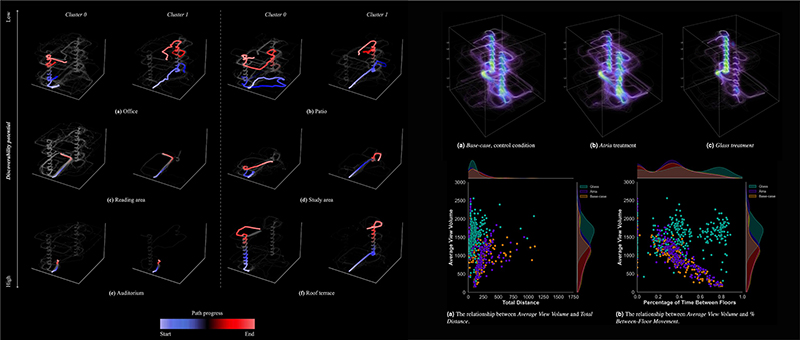Submitted by M.L. R. Grove on Thu, 15/02/2024 - 12:36
In this paper, we explore the mutual effect of prior background expectations and visibility afforded by the 3D configuration of the physical environment on wayfinding efficiency and strategy in multilevel buildings. We perform new analyses on data from 149 participants who performed six unaided and directed wayfinding tasks in virtual buildings with varying degrees of visibility. Our findings reveal that the interaction between visibility and prior background expectations significantly affects wayfinding efficiency and strategy during between-floor wayfinding tasks. We termed this interaction effect strategic visibility, which emphasizes the importance of the strategic allocation of visibility towards actionable building elements in promoting efficient wayfinding and shaping wayfinding strategy. Our study highlights the significance of strategic visibility in promoting inclusive and accessible built environments for neurodiversity. Finally, we provide an open-source dataset that can be used to develop and test new wayfinding theories and models to advance research in the emerging field of human-building interaction.
Link to the Open Access publication online: https://doi.org/10.1038/s41598-024-53420-6
Cite: Gath-Morad, M., Grübel, J., Steemers, K. et al. The role of strategic visibility in shaping wayfinding behavior in multilevel buildings. Sci Rep 14, 3735 (2024). https://doi.org/10.1038/s41598-024-53420-6

